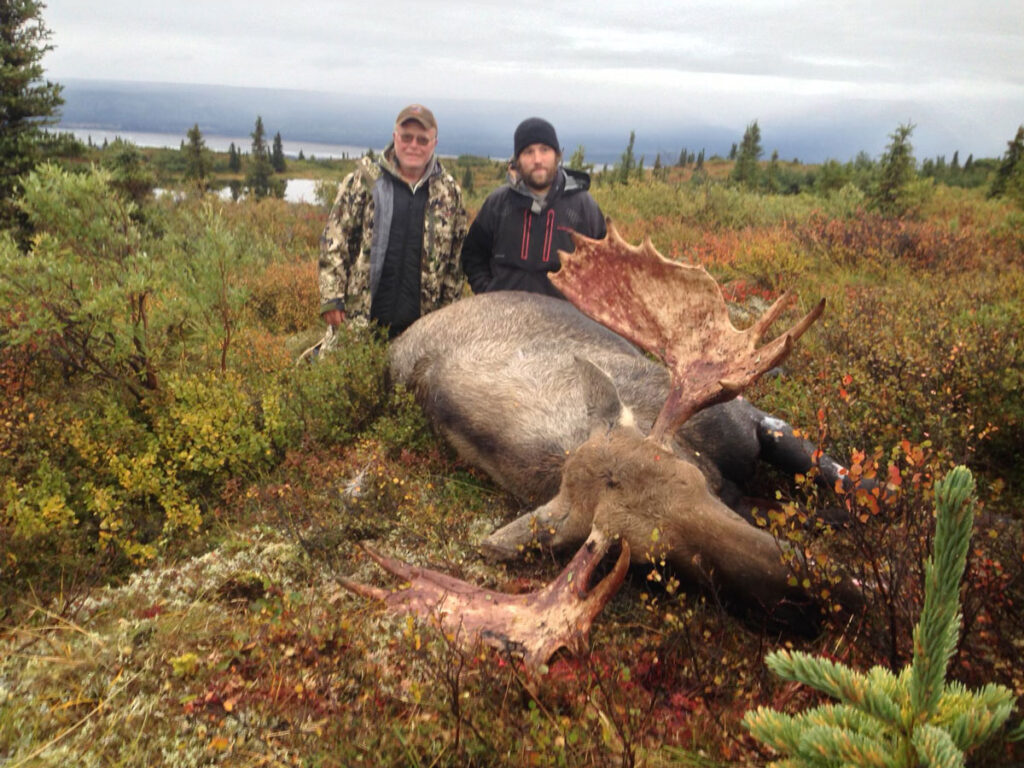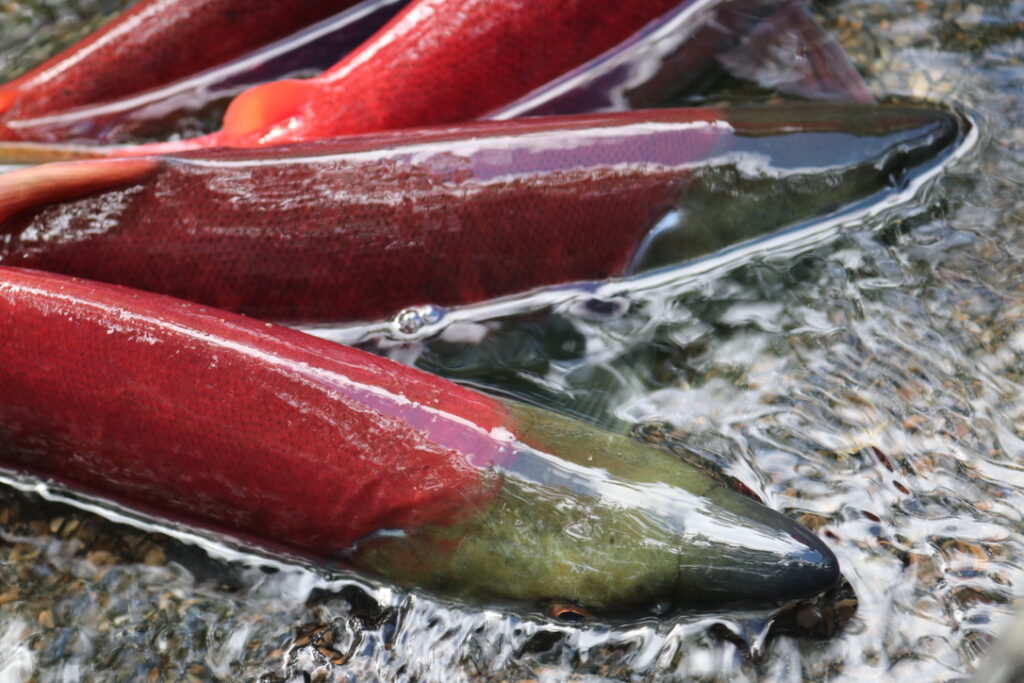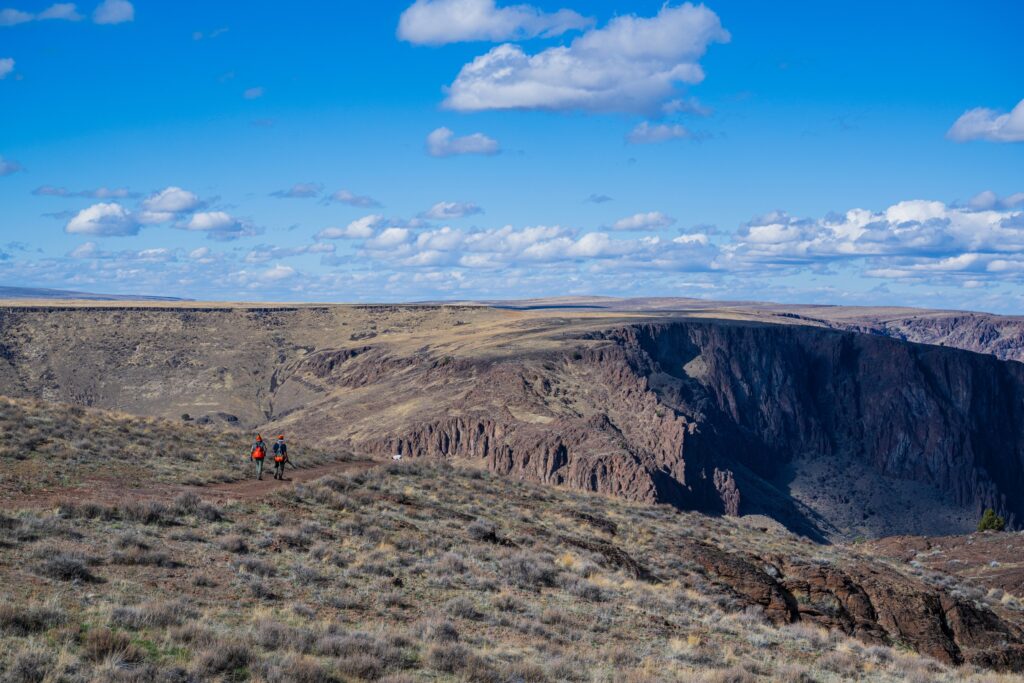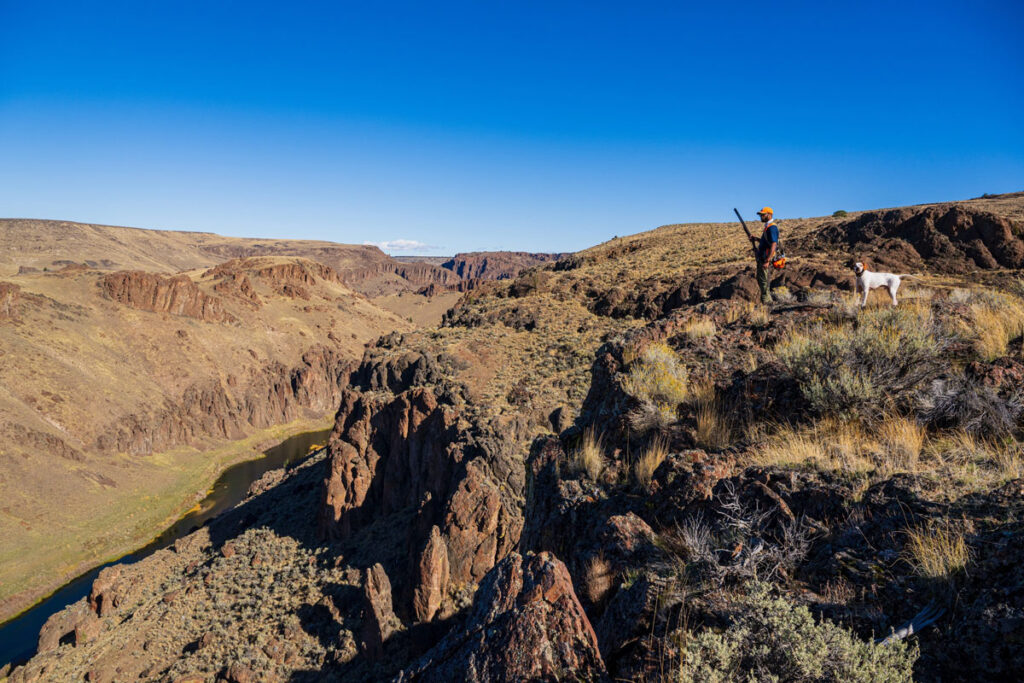Life-long Alaskan Bjorn Dihle explains what’s at stake for hunters and anglers on 28 million acres of public lands currently under review in Alaska
My older brother whispered the yardage as a Dall sheep ram slowly climbed toward a bank of fog.
“305. 310. 315,” he said, irritation growing in his voice.
I watched the ram through my rifle scope, knowing it was a matter of seconds until I no longer had a shot. Our younger brother was doing his best not to explode.
It was my first sheep hunt, and I was nervous about pulling the trigger on a sublegal animal. Our low-quality spotting scope was underpowered, but even to my untrained eye the ram looked more than full curl. The ram stepped into the first swirl of fog and stood broadside. A few moments after my shot echoed across the mountain, the sheep crashed into rocks. My brothers shook their heads in disbelief.
“We really thought you were going to blow it,” they said.
We were hunting the eastern Alaska Range, a mecca for outdoor adventure. Its mountains, tundra, and taiga offer everything from quests for Dall sheep and ATV moose hunts, to the annual fall Denali Highway caribou pilgrimage where families and friends enjoy time together trying to fill their freezers with the best meat out there. Much of the region is managed by the Bureau of Land Management as “D-1” lands.

“D-1” sounds like technical jargon that doesn’t apply to the real world, but what it really means is “some of the best and wildest fishing and hunting grounds in Alaska.” These are places where visitors and locals have the opportunity to do things like hunt caribou and moose, and fish for all five species of salmon and a host of other freshwater fish. It’s big country where you can wander and do, more or less, what you please. This sort of freedom is increasingly rare in places outside of Alaska. For many outdoor folks, the vast solitude that D-1 lands afford is the most special part of a fishing or hunting trip.
The D-1 lands currently under review by the BLM are concentrated in Western Alaska, including important winter range for the Western Arctic Caribou Herd, one of Alaska’s largest caribou herds. The planning area contains intact hunting and fishing habitat in other renowned areas across the state, including Bristol Bay—home to the world’s most prolific sockeye salmon fishery—and the headwaters of the Chilkat River in Southeast Alaska, famous for its salmon runs and for hosting the biggest congregation of bald eagles in the world.
A Rare Opportunity to Maintain Quality Habitat and Public Access
Alaska’s D-1 lands were originally withdrawn from mineral extraction in the 1970s to ensure the uses of these lands were consistent with the public interest. These lands have been effectively safeguarded from privatization and large-scale industrial development for approximately 50 years, which has helped maintain intact habitat and public access for hunters and anglers.
Now, the BLM is taking a fresh look at how 28 million acres of D-1 lands should be managed for future generations. Later this year, the agency plans to issue a decision to fully retain, partially retain, or revoke the withdrawals that have prevented mineral entry and conveyance to private interests for decades. If these conservation measures are revoked, it is reasonable to expect that hunting and fishing quality and opportunity would be diminished on some of Alaska’s most spectacular public lands.
These lands are home to approximately 100 rural communities. Many villagers in the planning area live hundreds of miles from the nearest modern grocery store; they harvest wild foods like game, fish, and berries to feed their families and to continue their cultural traditions. Nearly 80 Alaskan Tribes are calling on the BLM to maintain the existing D-1 safeguards that support salmon, caribou, moose, and other species on which they depend.
Alaska’s unique state and federal laws protect the customary and traditional uses of fish and game above all other consumptive uses. In order to maintain harvest opportunities for all users, it is essential that we maintain healthy populations of game and fish. The conservation of Alaska’s D-1 lands is an important strategy, especially for species experiencing population declines, such as caribou and Dall sheep.
“The BLM’s review of these 28 million acres is one of the largest public lands conservation opportunities in America,” said Jen Leahy, the Alaska program manager for the Theodore Roosevelt Conservation Partnership. “Many hunting and fishing groups, including the TRCP, must often focus on restoring important habitat that was previously degraded, or developing new conservation programs to address an unmet need. This is a unique issue because we’re seeking to maintain a successful conservation tool that has worked well for hunters and anglers for decades.”

A Map of the Future
It triggers a lot of memories when I look at a map of the 28 million acres the BLM is reviewing. There on the lower Noatak River is where that brown bear sow and cubs visited camp. There in Bristol Bay, I took a break picking sockeye out of a net to study a volcano rising out of the tundra. There, in the upper Chilkat River Valley, I found a bitten off wolf paw on an otherwise completely white, snow-covered alpine expanse. There, in the eastern Alaska Range was where my family got that bull moose. There, on that mountain was where a wolverine ran past three unconcerned bull caribou I was glassing. There, at the edge of that glacier was where my buddy and I snuck by a caribou that had just been killed and cached by a grizzly. A few hours before that, we’d encountered a herd of more than 70 Dall sheep.
I have only experienced a portion of D-1 lands, but what I’ve seen has been more than enough to make me know what’s at stake. Allowing all 28 million acres to be opened to industrialization and privatization would deprive future generations of our outdoor heritage.
Hunters and anglers have an opportunity to help protect some of the best and wildest fishing and hunting grounds in Alaska. The BLM comment period on the D-1 draft environmental impact statement is open through February 14, 2024. If you believe like I do that hunting, fishing, and clean water are our highest priorities for managing these public lands, please take one minute to submit a comment to the BLM in support of retaining the D-1 withdrawals. The public may also submit comments directly through the BLM’s site.
Bjorn Dihle is a lifelong Alaskan, who’s been hunting, fishing and exploring his state since he was a kid. He lives with his wife and two young boys in Southeast Alaska, where he does a variety of wildlife and conservation work.
Photo credits: Bjorn Dihle








So I’m curious what the driving force is for the BLM to suddenly change course to question the current use and status of the lands. Is it the state of Alaska and extraction industries? Or is it residents trying to restrict non residents to protect subsistence use? Either way it seems like a dangerous precedent is about to open lands and habitats that have been largely protected till now.